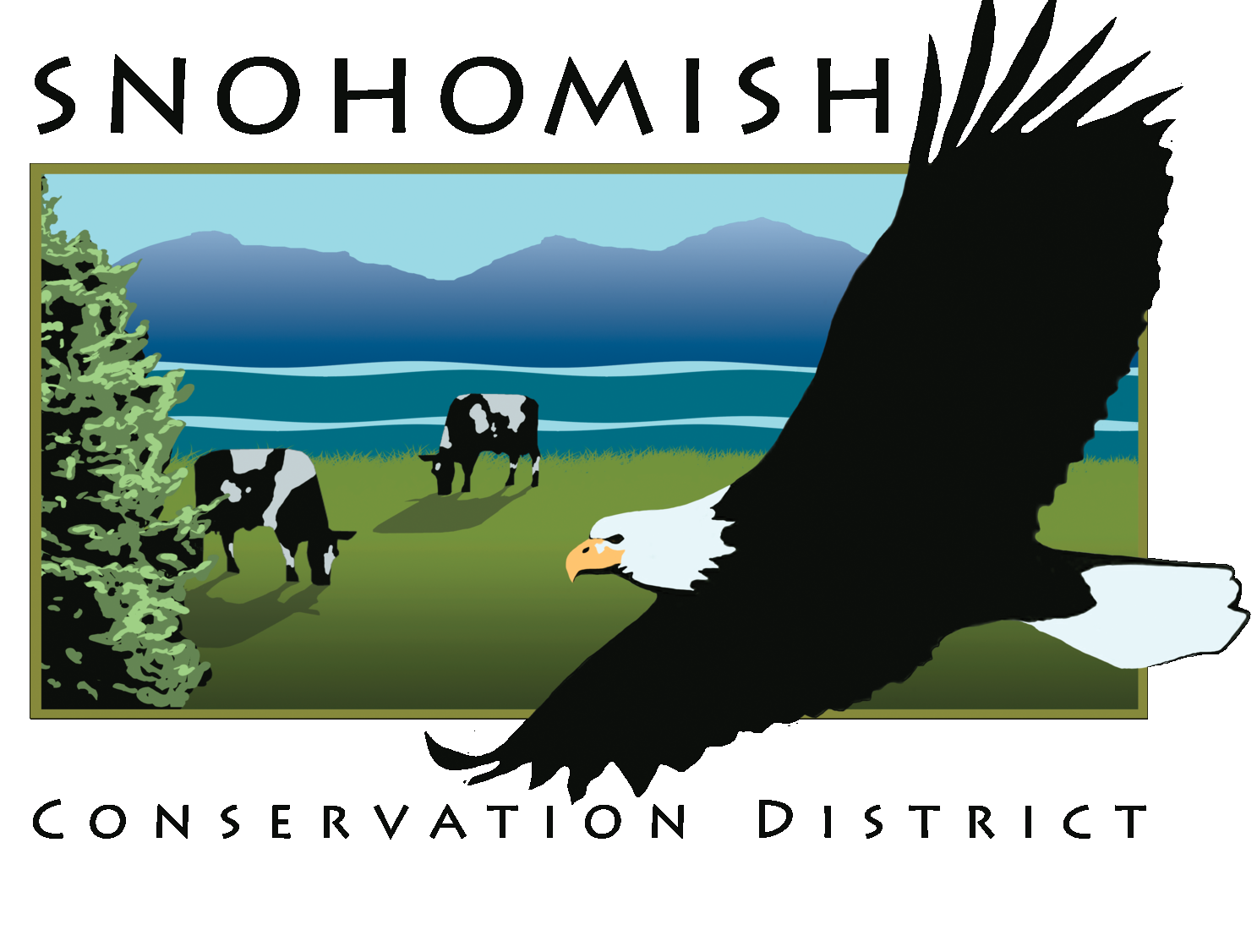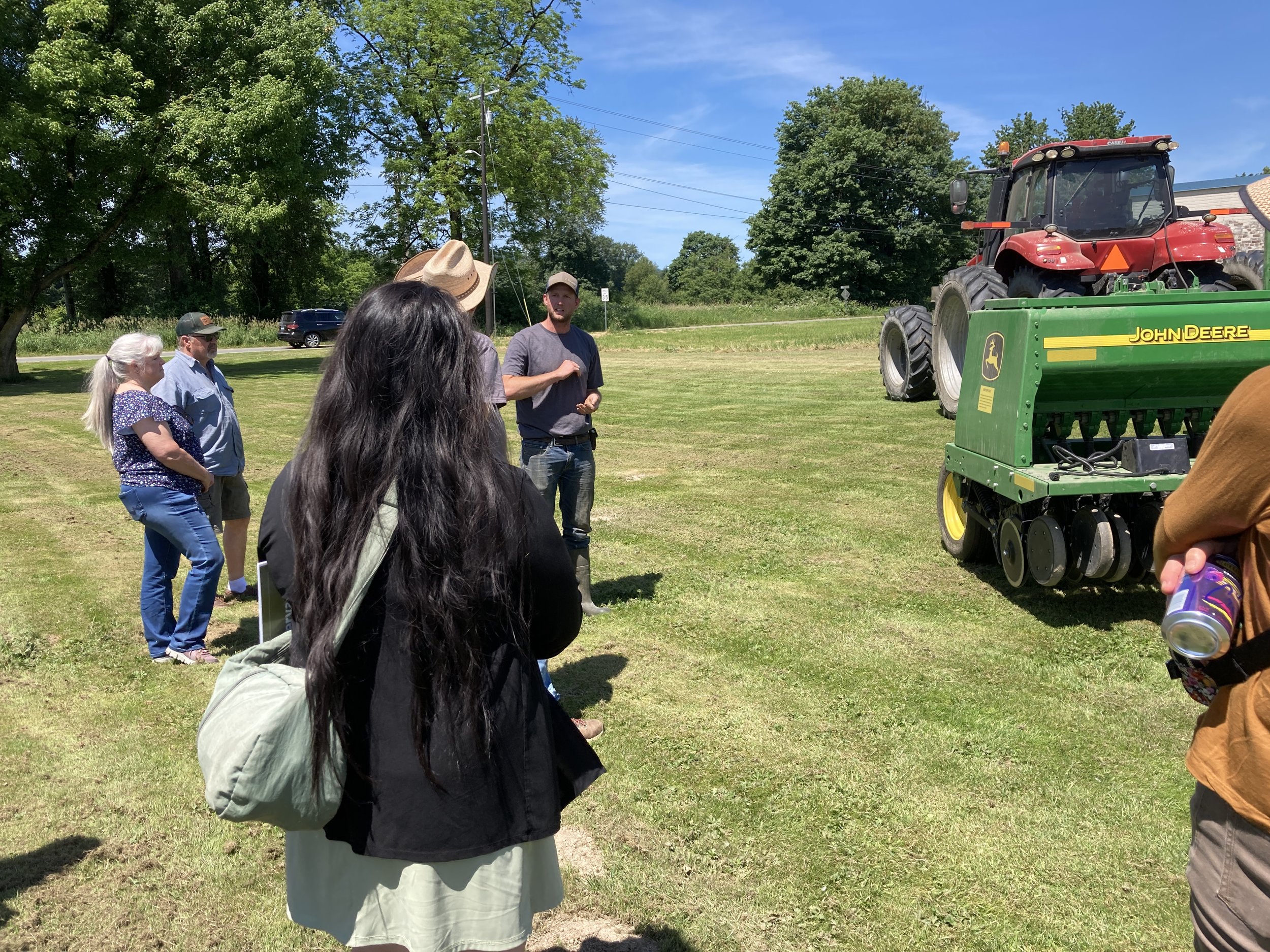Less Tillage, More Savings: Planting with a No-till Drill
/If you're a farmer looking to transition to low or no-till practices, the cost of new equipment can be a major hurdle. At Snohomish Conservation District, one of our goals is to help farmers overcome these kinds of challenges.
We recently helped Werkhoven Dairy secure Sustainable Farms and Fields funding from the Washington State Conservation Commission to help cover the cost of a new seed drill that supports both no till and reduced till practices. Read about their experience and why they said the investment “was worth every penny.”
Minimal or no-till practices offer sustainable and efficient alternatives to conventional field preparation methods such as discing and plowing. No-till and reduced-till drills are designed to plant seeds directly into minimally disturbed soil and offer multiple benefits, such as:
preserving soil structure
supporting soil biology
increasing the water-holding capacity of soil
increasing seed germination rates
reducing the amount of fuel needed for field preparation and seeding (saving money and lowering carbon dioxide emissions)
increasing efficiency on the farm and reducing time in the field
Grass planted using broadcast seeding results in an uneven distribution of plants.
Grass planted with a seed drill results in an even distribution of plants.
Werkhoven Dairy in the Skykomish River Valley milks 1,100 cows and farms approximately 1,500 acres to produce feed including corn, annual grass, perennial grass, and triticale. Perennial grass is rotated with corn, while annual grass and triticale are used as cover crops which are sown after corn is harvested in the fall. The grass and triticale grow throughout the winter and early spring and are then harvested prior to planting either corn or grass the following spring as an additional feed source.
Prior to purchasing their new seed drill, the Werkhovens planted all grasses, legumes, and grains via a broadcasting method and used a corn-specific planter for their corn. The groundwork they needed to do before each planting contributed to compaction of underlying soil layers and required a lot of time, labor, and fuel.
Here’s how the new seed drill has impacted the Werkhoven’s three different seeding scenarios:
#1: Cover crop planting
Previously, planting cover crops required one pass with a deep set disc to prepare the seed bed, then two passes with a cultimulcher after aerial seeding. Now with the seed drill, the cover crop seeds can be planted after harvest without any field preparation, saving approximately 3.2 gallons of fuel per acre.
#2: Rotating from a corn crop to grass or alfalfa
Before the seed drill, planting grass and alfalfa after a corn crop required four tilling passes with a disc to break up corn residue and prepare the seed bed. Seed was then spread via aerial broadcast followed by three passes with a cultimulcher to put the seeds in contact with the soil.
Now, planting grass and alfalfa after a corn crop using the seed drill requires only two discing passes to smooth the soil surface. Seed is drilled directly into the soil and the corn residue remains between the grass seed beds, covering the soil and preventing moisture loss. The drill is lighter than a disc and is doing lighter work (not plowing soil), so the fuel consumption savings is estimated at around 3.2 gallons per acre.
Steven Losleben (Werkhoven) describes the setup and use of the no-till drill to workshop attendees.
The no-till drill attached to their tractor.
#3: Replanting grass in flood-damaged fields
A third scenario where the seed drill saves fuel and reduces soil compaction comes from reseeding grass after damage from saturation or flooding. The method previously used included spraying the remaining crop with herbicide, then preparing the seedbed for fresh seed several weeks afterward. Preparation required more passes with a disc to break up grass residue.
Now with the seed drill, no herbicide or other preparation is required. Fresh seed is simply drilled into the damaged areas in one pass over the field. This saves time and money and reduces soil disturbance, preserving water infiltration and organic matter. Fuel savings in this scenario can be as much as 10.2 gallons of fuel per acre.
Other benefits
In addition to the savings mentioned above, the Werkhovens may end up using 25% less seed than with aerial seeding because the seed drill substantially increases germination rates. The new drill also spaces seeds at predetermined widths between rows, reducing the risk of clumping and providing more space between plants, allowing them to grow without crowding.
So far this spring, the Werkhovens have used the new drill on approximately 100 acres and they recently demonstrated the use of it during a field day workshop in June. While the drill still requires some fine-tuning and mid-seeding checks to ensure that all seed is dropping as expected, the Werkhovens are very happy with the results. They’re especially pleased that less time in the fields means more time available to spend with family.
The process to secure funding and purchase the seed drill took just over a year. Sustainable Farms and Fields covered over 50 percent of the equipment cost.
If you are interested in no-till/reduced-till farming, Snohomish Conservation District Resource Planners are available to help figure out what might work for your operation, and what funding is available to facilitate the change.
The project is supported with funding from Washington’s Climate Commitment Act. The CCA puts cap-and-invest dollars to work reducing climate pollution, creating jobs, and improving public health. Information about the CCA is available at www.climate.wa.gov.





